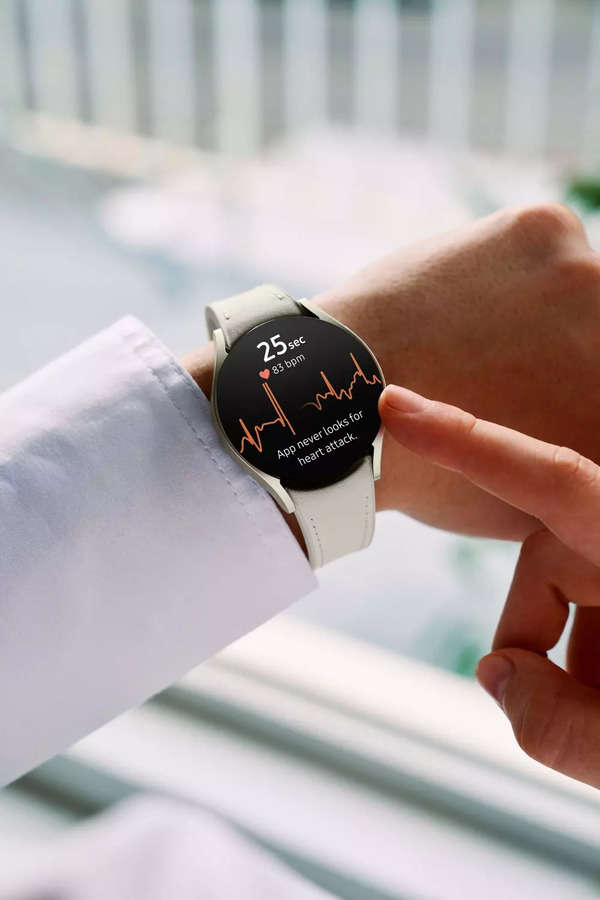Ever wondered what happens inside your chest when you feel that familiar flutter in your heart? While a doctor’s stethoscope might be the classic tool for listening to your heart, modern technology brings that power to your wrist with ECG (electrocardiogram) on wearable devices. Let’s delve into how these gadgets translate your heartbeat into a digital reading.

What is an ECG?
An ECG is a test that measures the electrical activity of your heart. It records the electrical signals as they travel through your heart muscle, creating a visual representation of its rhythm and function. Traditionally, ECGs were performed in a clinical setting using electrodes attached to your chest, arms, and legs.
How Does Wrist-Based ECG Work?
Wrist-worn ECG devices take a simplified approach compared to traditional setups. Here’s the breakdown:
• Electrodes on Your Wrist: These smartwatches or fitness trackers have built-in electrodes embedded strategically on the underside of the device and sometimes on the crown or side button.
• Closing the Circuit: When you initiate an ECG measurement, you typically need to touch a specific button or place your finger on a designated electrode while holding the device still. This creates a closed electrical circuit that can detect the tiny electrical signals generated by your heart.
• Signal Processing and Analysis: The watch amplifies and filters the faint electrical signals picked up by the wrist electrodes.
• On-Device Interpretation (Optional): Some advanced devices may offer on-screen interpretations of your heart rhythm, indicating a normal heart rhythm or potentially detecting irregularities like atrial fibrillation (AFib). However, these interpretations are for informational purposes only and should not be taken as a diagnosis.
Limitations of Wrist ECGs:
It’s important to remember that wrist-based ECGs are not a replacement for a traditional 12-lead ECG performed in a doctor’s office. Here’s why:
• Limited Electrode Placement: Chest electrodes in a traditional ECG provide a more comprehensive picture of your heart’s electrical activity compared to the limited placement on your wrist.
• Accuracy Considerations: Positioning and other factors can sometimes affect the accuracy of wrist-based ECG readings.
• Not a Diagnostic Tool: While these devices might identify potential irregularities, they cannot definitively diagnose heart conditions. It’s crucial to consult a doctor if you experience any concerning symptoms or receive an abnormal reading.
The Future of Wrist ECGs:
Despite the limitations, wrist-based ECG technology is continuously evolving. As the technology improves and clinical validation progresses, we can expect these devices to become even more accurate and helpful in monitoring heart health.
In Conclusion:
Wrist-worn ECG technology offers a convenient way to gain insights into your heart’s rhythm. While not a substitute for professional medical evaluation, these devices can empower you to be more proactive about your heart health. Remember, consult a doctor if you have any concerns or experience any irregularities in your ECG readings.
Leave a comment